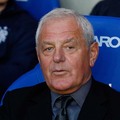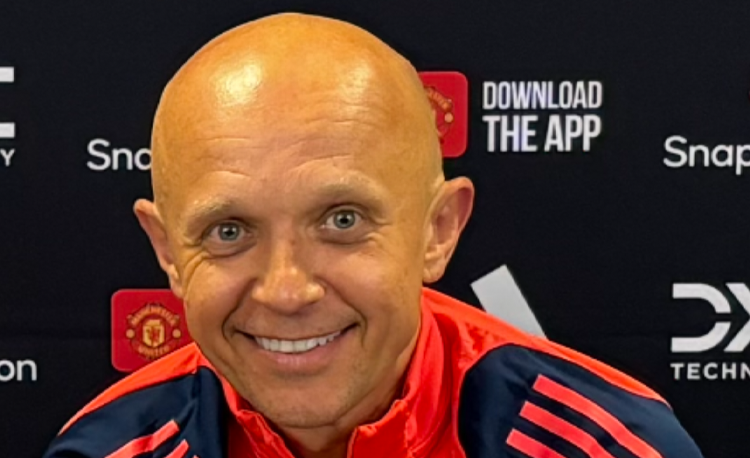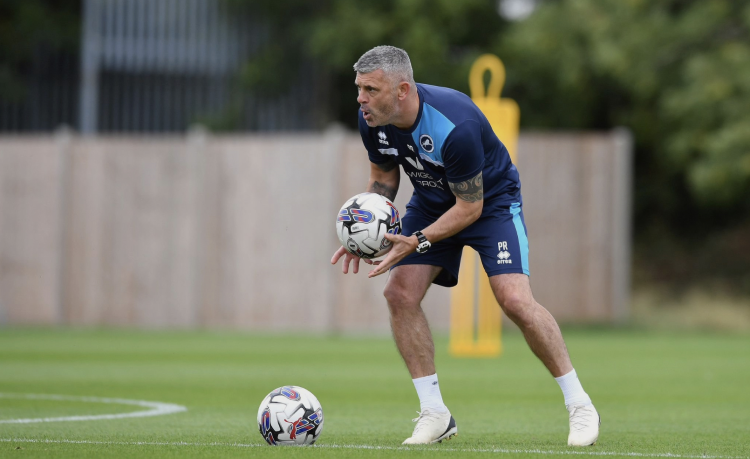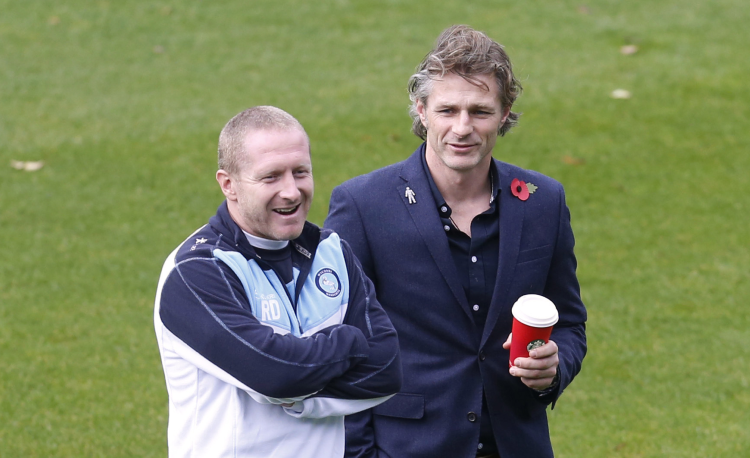Striker movement from a cross
This session is all about the movement that strikers make when attacking a cross. Defenders take up specific positions when the ball goes to wider areas and this session is about trying to move them to create areas that strikers can capitalise on.
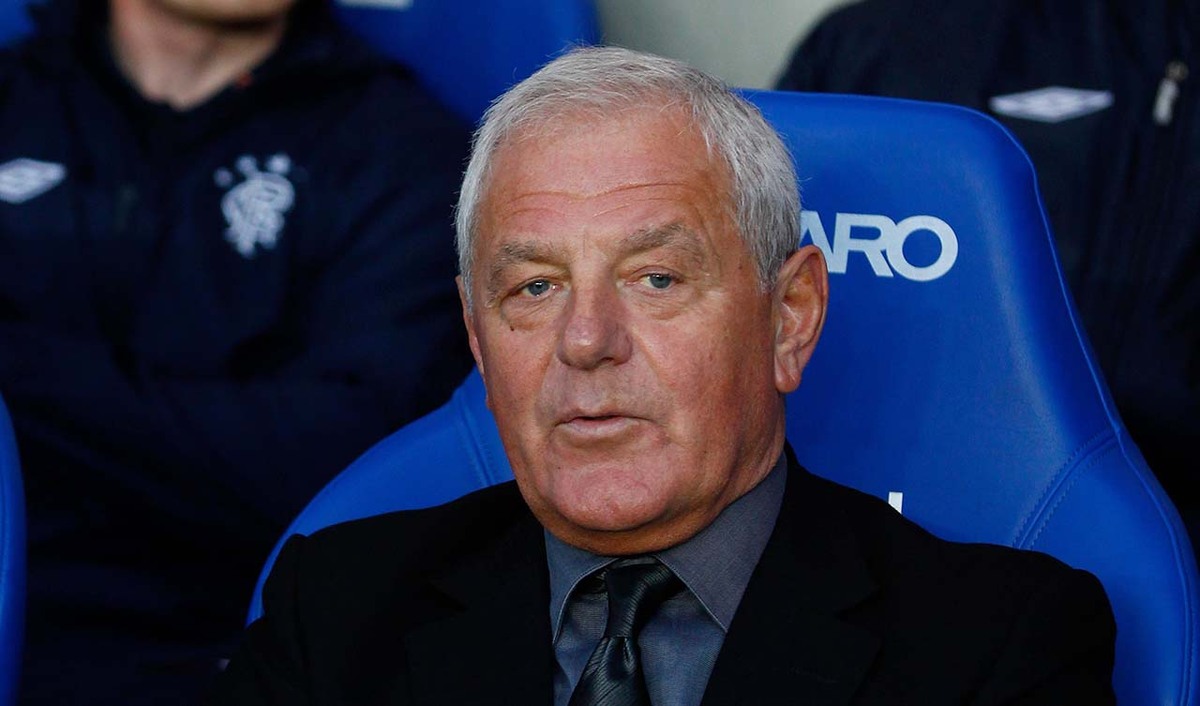
| Area | 70 yards x full pitch width |
| Equipment | Balls, bibs, cones, 2 full size goals |
| No. of Players | Up to 20 players + 2 goalkeepers |
| Session Time |
Crossing and finishing: 25mins, Zonal game: 25mins |
This session is all about the movement that strikers make when attacking a cross. Defenders take up specific positions when the ball goes to wider areas and this session is about trying to move them to create areas that strikers can capitalise on.
The session opens with an unopposed crossing and finishing activity that progresses into a zonal game. It uses the same playing area but turns the basic drill into a more game-like situation.
In the zonal game the defenders can be coached as well if needed, although the main priority remains the movement of the strikers. The session is used to show players the benefits of working with each other to create goal scoring opportunities.
The players always find this session engaging because it’s about creating chances and scoring goals, which most players enjoy. We would run the crossing and finishing activity twice a week and the zonal game once a week.
CROSSING AND FINISHING
We set up a playing area as shown: 70 yards in length and the full width of the pitch. Three central zones are marked out the width of the penalty area. A goal and a goalkeeper are positioned at each end.
We’re using 20 outfield players split into two groups of 10. Set up as shown with two groups of three midfield players taking turns to pass out wide to the crosser at each end. After making the first pass, the starting midfielder then makes a solo forward run to join the two strikers in attacking the goal, opposed only by the goalkeeper, as shown [1a].
1a
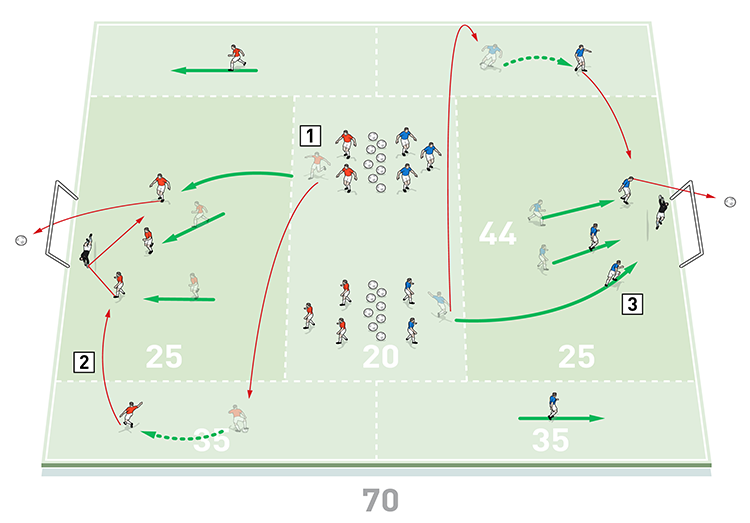
2. The crosser plays the ball into the goalmouth area where two strikers and the midfielder try to meet the ball
3. Play goes on at both ends simultaneously
Once the attack has taken place, the midfielder rejoins his group back into the central zone and another midfielder makes the next starting pass
to the crosser. They take it in turns to pass to the crosser on the left and then the crosser on the right.
In the diagram [1b], the movement of the two strikers and the attacking midfielder is highlighted. The nearest striker to the crosser should go to the near post ready to meet the cross, the second striker should go into the middle of the penalty area slightly deeper than the first striker, and the attacking midfielder heads to the back post. The attackers should communicate with each other so that if one drops deeper to pull a defender out of position, another one should attack the space vacated.
1b
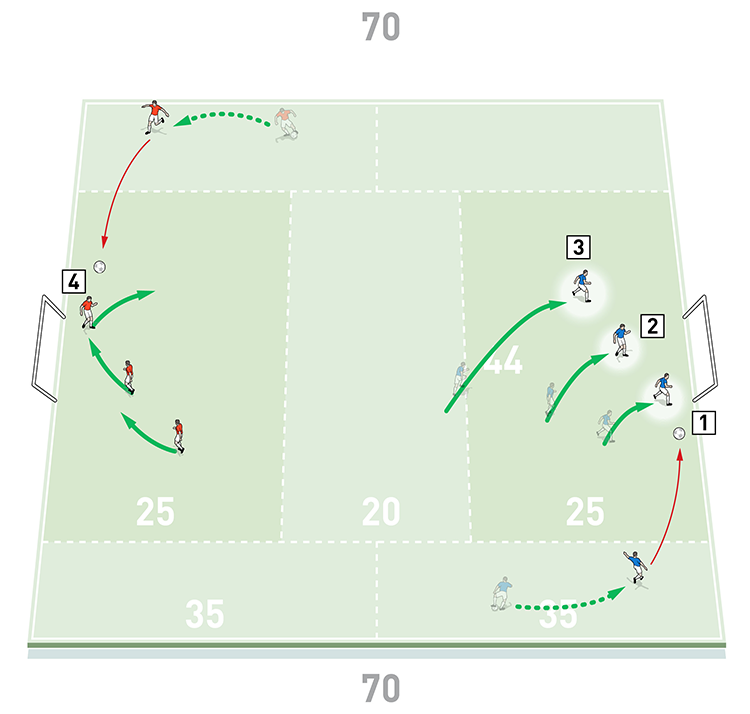
2. The second striker should go into the middle of the penalty area, slightly deeper than the first striker
3. The attacking midfielder heads towards the back post
4. As an alternative, the red striker has made a near post run but then drops deep as if to pull a defender out of position and the second striker runs into the space created at the near post
ZONAL GAME
For this zonal game we use the same basic set-up as before but now we’re using 16 outfield players split into two teams of eight, plus one goalkeeper for each team. Each of the three central zones contains two players from each team. Both teams also have one crosser in each wide channel at the end they
are attacking.
Play starts from the goalkeeper and as in the previous crossing and finishing drill, the midfielder must pass to the wide player who crosses the ball into the strikers. All players are locked in their zones apart from the wide player on the opposite side of the pitch to the crosser and he can join the strikers in the penalty area to make it a 3v2 attack, as shown [2a].
2a
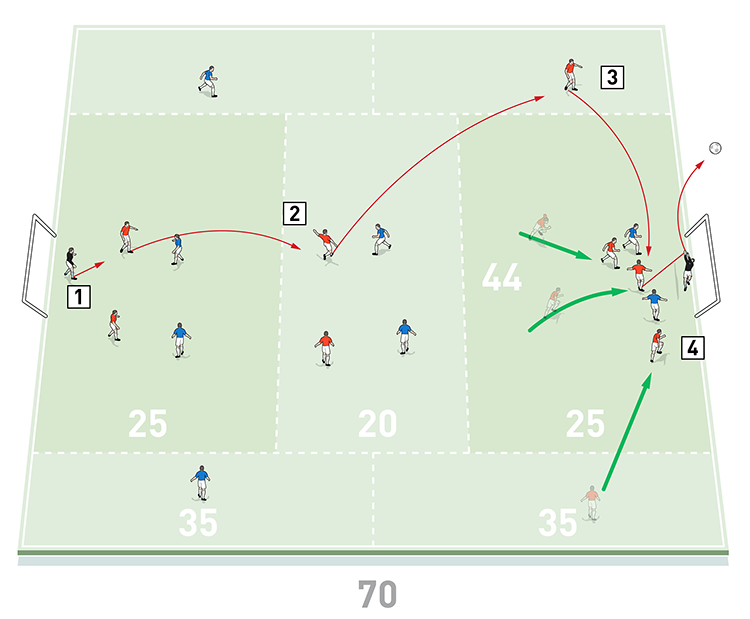
2. The midfielder plays the ball to the wide player
3. The wide player crosses the ball into the goalmouth area
4. All players are locked in their zones apart from the wide player who is not crossing and he can join the two strikers in the penalty area to make it a 3v2 attack
How do I progress the activity?
We use the same basic set-up but now we introduce an extra defender to each team. In this progression, one of the three defenders can now go and challenge the crosser in the wide zone and try to win the ball or block the cross, as shown [2b].
2b
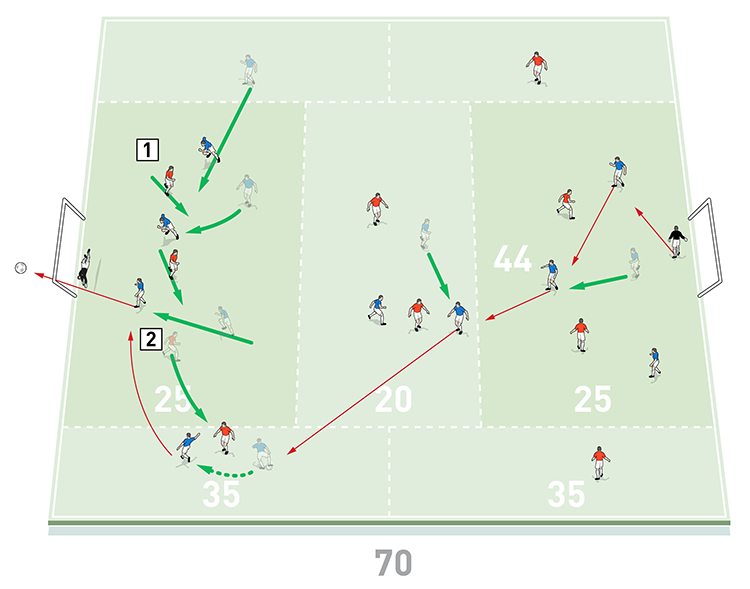
2. Now one of the defenders is free to enter the wide zone and challenge the crosser. He should try to win the ball or block the cross but here the winger beats him
After a few weeks we’d take away the cones and markers and play this as a game, albeit keeping the same area size and with players in the same positions and still with the emphasis on striker movement.
Editor's Picks
Attacking transitions
Deep runs in the final third
Using the goalkeeper in build-up play
Intensive boxes drill with goals
Penetrating the final third
Creating and finishing
My philosophy
Pressing initiation
Compact team movement
Coaches' Testimonials

Alan Pardew

Arsène Wenger

Brendan Rodgers

Carlos Carvalhal

José Mourinho

Jürgen Klopp

Pep Guardiola

Roy Hodgson

Sir Alex Ferguson

Steven Gerrard
Related
Shooting and movement
Crossing, finishing and defending
Playing forward in possession
Coaches' Testimonials

Gerald Kearney, Downtown Las Vegas Soccer Club

Paul Butler, Florida, USA

Rick Shields, Springboro, USA

Tony Green, Pierrefonds Titans, Quebec, Canada
Join the world's leading coaches and managers and discover for yourself one of the best kept secrets in coaching. No other training tool on the planet is written or read by the calibre of names you’ll find in Elite Soccer.
In a recent survey 92% of subscribers said Elite Soccer makes them more confident, 89% said it makes them a more effective coach and 91% said it makes them more inspired.
Get Monthly Inspiration
All the latest techniques and approaches
Since 2010 Elite Soccer has given subscribers exclusive insight into the training ground practices of the world’s best coaches. Published in partnership with the League Managers Association we have unparalleled access to the leading lights in the English leagues, as well as a host of international managers.
Elite Soccer exclusively features sessions written by the coaches themselves. There are no observed sessions and no sessions “in the style of”, just first-hand advice delivered direct to you from the coach.

